


The Perfect Wave-Riding Companion

Surfboards are not one-size-fits-all; they come in a variety of types and feature sets designed to cater to the diverse needs and preferences of surfers. Whether you're a beginner, intermediate, or an advanced rider, understanding the different surfboard types and their unique features is essential in ensuring that you have the right tool for your next wave-riding adventure. In this article, we'll explore some of the most common surfboard types and their distinctive features.
Longboards: The Classic Cruiser
Features: Longboards are typically 8 to 11 feet long and characterized by their stability and ease of use. They have a rounded nose and a wide, stable platform for a comfortable, laid-back surfing experience. Longboards are ideal for beginners, providing an excellent platform for learning the basics of paddling, balancing, and wave-catching.
Funboards: Versatility And Maneuverability
Features: Funboards, also known as mini-malibus, combine elements of both longboards and shortboards. They are typically between 7 and 8 feet long and provide a great balance of stability and maneuverability. Funboards are excellent for intermediate surfers looking to progress beyond longboarding and experiment with more dynamic moves.
Shortboards: High-Performance Precision
Features: Shortboards are the go-to choice for advanced surfers seeking precision and responsiveness. They are typically 5 to 7 feet long, characterized by a narrow, pointed nose, and a sharp, high-performance rocker. Shortboards are designed for quick, agile maneuvers and are often used in professional competitions. They are ideal for experienced surfers looking to push the boundaries of their performance.
Fish Boards: Speed And Agility
Features: Fish boards are recognizable by their distinctive swallowtail shape and are typically between 5'4" and 6'4" in length. These boards offer a great combination of stability and speed, making them ideal for surfers looking to capitalize on smaller, mushier waves. Fish boards are known for their fun and playful nature in the water.
Gun Boards: Conquering Big Waves
Features: Gun boards are specialized surfboards designed for riding larger, more powerful waves. They are typically longer and narrower, with a pointy nose and a prominent rocker to handle steep drops. Gun boards are reserved for experienced surfers and are a must for those seeking the thrill of conquering massive waves.
Hybrid Boards: Best Of Both Worlds
Features: Hybrid boards combine features from various surfboard types to create a versatile and adaptive option. They offer a blend of stability, maneuverability, and wave-catching ability. Hybrid boards are suitable for a wide range of surfers, providing the best of both longboarding and shortboarding worlds.
Soft-Top Boards: Beginner-Friendly Durability
Features: Soft-top boards are constructed with a foam deck that offers excellent stability and durability. They are perfect for beginners as they provide a forgiving and buoyant platform. Additionally, the soft top reduces the risk of injuries during falls, making them a safe choice for newcomers.
Mini Simmons: Speed And Retro Style
Features: Mini Simmons boards are short, wide, and thick with a distinctive parallel outline and deep double concave bottom. They are known for their incredible speed and a retro aesthetic. Mini Simmons boards are favored by surfers who appreciate a unique and stylish approach to wave-riding.
Surfboard types and their features play a pivotal role in determining the kind of surfing experience you'll have. Whether you're looking for stability, speed, agility, or precision, there is a surfboard tailored to your needs. By understanding the characteristics and applications of different surfboard types, you can make an informed choice that will enhance your surfing adventures and keep you riding the waves with confidence. So, take your time exploring these options and choose the surfboard that best aligns with your surfing aspirations.
The Crucial Role Of Team Dynamics In Paintball
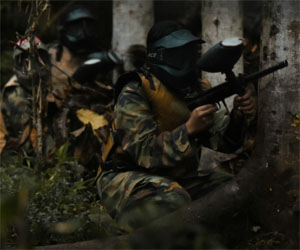 The Power Of Team Dynamics In Paintball
The Power Of Team Dynamics In Paintball
Team dynamics encompass the interactions and coordination between paintball players. Whether you're a seasoned pro or a novice, the way your team functions can significantly impact your performance and the outcome of the game.
Here's why team dynamics matter:
Strength In Numbers: Paintball is a team sport, and the synergy between teammates is crucial. A well-coordinated team can overcome individual weaknesses, outmaneuver opponents, and achieve victory.
Effective Communication: In paintball, communication is the lifeline of teamwork. Sharing information about enemy positions, plans, and actions helps the team adapt and respond to the evolving situation.
Cover And Support: Teammates can provide cover fire and support, creating opportunities for their allies to advance, reload, or take strategic positions. This teamwork is essential for maintaining control on the battlefield.
Strategic Combinations: Teams can devise strategies that involve various roles, such as snipers, assault players, and defenders, working in tandem to achieve a common goal. Combining these roles strategically is a hallmark of effective team dynamics.
Unity And Morale: A cohesive team fosters unity and high morale, which, in turn, boosts confidence and motivation. This positive atmosphere can lead to better decision-making and performance.
Key Aspects Of Effective Team Dynamics
Communication: Open and clear communication is the cornerstone of effective team dynamics. Players should use radios, hand signals, or verbal cues to convey vital information to their teammates.
Roles And Responsibilities: Define roles within the team based on each player's strengths and preferences. This helps in optimizing the team's performance and allowing players to focus on their specific tasks.
Trust And Support: Trust your teammates and provide support when needed. Trusting that your teammates will cover you or execute their part of the strategy is vital for effective teamwork.
Adaptability: Team dynamics should allow for adaptability. Paintball scenarios can change rapidly, so the team must be flexible and ready to adjust their tactics as needed.
A Fusion Of Fun And Finesse
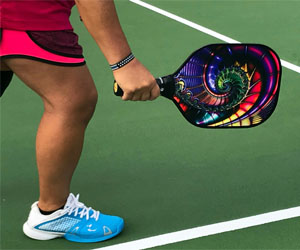 Accessibility: The essence of pickleball is rooted in its accessibility. With a smaller court and a slower-paced game compared to many other racquet sports, it's an ideal choice for players of all skill levels and physical conditions. Whether you're a child or a senior, a novice or an experienced athlete, pickleball offers an inclusive and welcoming environment. The low barriers to entry make it easy for anyone to pick up a paddle and give it a try.
Accessibility: The essence of pickleball is rooted in its accessibility. With a smaller court and a slower-paced game compared to many other racquet sports, it's an ideal choice for players of all skill levels and physical conditions. Whether you're a child or a senior, a novice or an experienced athlete, pickleball offers an inclusive and welcoming environment. The low barriers to entry make it easy for anyone to pick up a paddle and give it a try.
Laughter And Camaraderie: A defining feature of pickleball is the frequent exchange of laughter and camaraderie on the court. It's a sport where players often engage in friendly banter and share in the joy of play. The casual and social nature of pickleball fosters connections and friendships among participants. Even in the midst of intense rallies, the lighthearted spirit of the game prevails.
The Rally Dance: Pickleball's signature rally dance, characterized by quick and rhythmic back-and-forth exchanges, is where the essence of finesse becomes evident. The game challenges players to find the delicate balance between power and precision. Mastering the ability to place the ball with accuracy is a fundamental aspect of the sport, and it's this finesse that keeps players engaged and enthralled.
 Nutrition And Diet: A well-balanced diet plays a crucial role in an athlete's physical improvement. Proper nutrition ensures that the body receives the necessary fuel to perform at its best, recover, and build muscle. Athletes often work with nutritionists to tailor their diet to their specific needs.
Nutrition And Diet: A well-balanced diet plays a crucial role in an athlete's physical improvement. Proper nutrition ensures that the body receives the necessary fuel to perform at its best, recover, and build muscle. Athletes often work with nutritionists to tailor their diet to their specific needs.
Rest And Recovery: Intense training puts strain on the body, and adequate rest and recovery are vital. This includes getting enough sleep, incorporating rest days into the training schedule, and using recovery techniques like massage and stretching.
Personalized Training Plans: Not all athletes are the same, and their training plans should reflect this. Tailored training programs, often designed with the help of coaches or trainers, consider the athlete's current physical condition, goals, and weaknesses.
Monitoring Progress: Regular assessment of progress is essential. Athletes use metrics such as performance data, body measurements, and feedback from trainers to track their improvement. These insights guide necessary adjustments to training and nutrition plans.
Mental Resilience: Physical improvement isn't just about the body; it's also about the mind. Athletes must develop mental resilience to push through challenges, setbacks, and plateaus. A positive attitude and strong mindset are key assets on this journey.



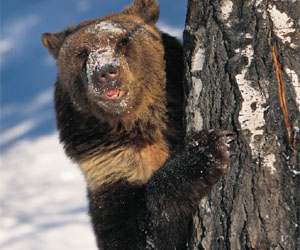
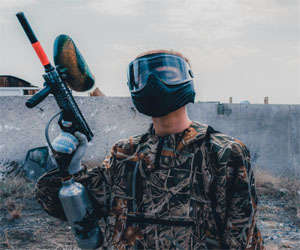

Identifying Birds In The Wild
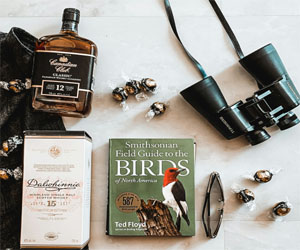 Field Marks: Bird identification often begins with field marks, which are distinctive physical characteristics. These may include a bird's size, shape, coloration, markings, beak shape, and the pattern of its wings and tail. For example, the size and shape of a bird can help you distinguish a robin from a sparrow.
Field Marks: Bird identification often begins with field marks, which are distinctive physical characteristics. These may include a bird's size, shape, coloration, markings, beak shape, and the pattern of its wings and tail. For example, the size and shape of a bird can help you distinguish a robin from a sparrow.
Plumage And Colors: Observing a bird's plumage, or feathers, is a key aspect of identification. Look for unique color patterns on a bird's head, back, wings, and underparts. These colorations can vary widely among species, such as the vibrant red of a cardinal or the iridescent blue of a jay.
Behavior And Habitat: The behavior and habitat of a bird can provide valuable clues for identification. Some species are known for their distinctive behaviors, such as the woodpecker's habit of tapping on trees. Birds are also often associated with specific types of environments, like wetlands, forests, or grasslands.
Tools For Bird Identification:
Binoculars: A good pair of binoculars is essential for getting a closer look at birds in the wild. They allow you to discern fine details and field marks that might be indistinct to the naked eye.
Field Guides: Field guides are books or digital resources that provide detailed information on bird species. They contain illustrations, photographs, range maps, and descriptions that can help you identify birds based on their physical characteristics and habitat.
Apps And Websites: In the digital age, there are numerous bird identification apps and websites that offer comprehensive databases, bird calls, and interactive tools to assist in recognizing and learning about different bird species.
Audio Guides: Bird vocalizations, such as songs and calls, are crucial for bird identification. Audio guides or smartphone apps that provide bird sounds can be indispensable in determining the species you're observing.
Paintball Strategy And Coordination
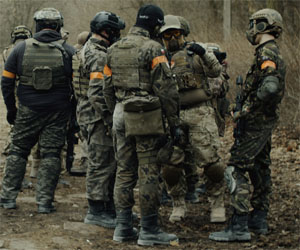 The Role Of Strategy In Paintball
The Role Of Strategy In Paintball
Paintball is not just about firing paint-filled projectiles at opponents; it's about outthinking them. A successful paintball strategy serves as a blueprint for achieving objectives and gaining the upper hand. Here's why strategy matters:
Objective Achievement: In many paintball games, the goal is not just to eliminate opponents but to achieve specific objectives, such as capturing flags or holding positions. A well-thought-out strategy guides the team in achieving these objectives.
Resource Management: Paintballs are finite resources, so effective strategy helps conserve ammunition and use it judiciously. Proper resource management can be a game-saver.
Adaptability: A sound strategy provides a framework, but it must also be adaptable. As the game evolves and circumstances change, a team should be able to adjust its tactics to suit the situation.
Tactical Advantage: Strategic planning can create tactical advantages by anticipating the opponent's moves and positioning your team accordingly. It's about setting up the chessboard before the game begins.